What is fiber? Why is fiber important? Is it easy to increase dietary fiber intake? Have questions about dietary fiber? Great! I'm a Registered Dietitian and I have the answers!
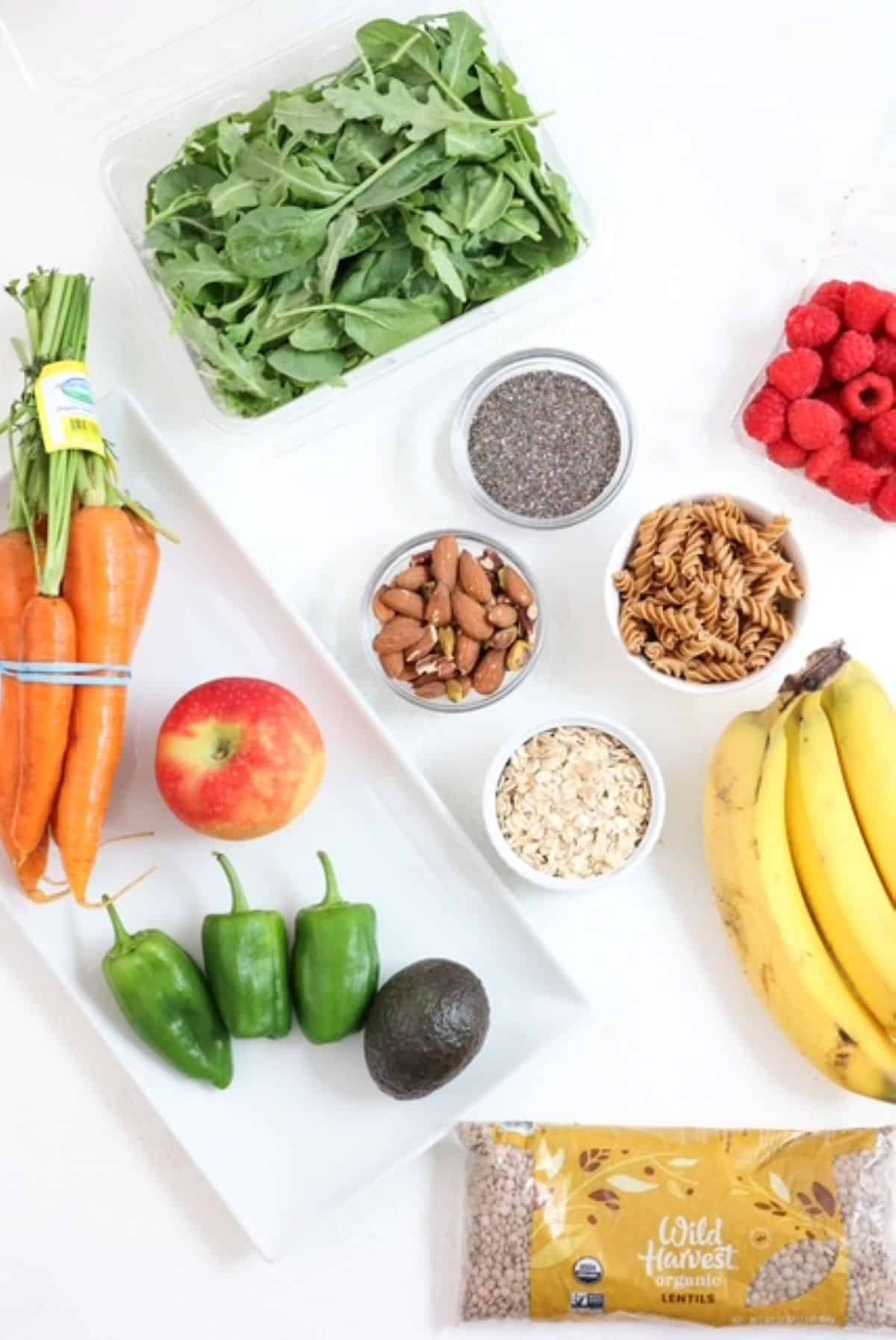
Jump to:
What is Fiber?
Dietary fiber, also known as 'roughage,' is the part of plants that we eat that our bodies cannot break down completely (digest). The two main types of fiber are soluble and insoluble fiber.
Soluble and insoluble fiber are not the same thing. Rather, they work together. In other words, you need both types of fiber for good gut health.
Why is Fiber Important?
Dietary fiber is key for healthy digestion, a strong immune system, disease prevention, and appetite regulation. Fiber is found naturally in a variety of foods and yet most Americans do not meet their daily fiber needs. I'm a dietitian on a mission to change that! 😍
- Healthy Digestion Do you find yourself feeling constipated? Fiber helps keep things moving through your digestive tract, which can help prevent constipation. Just be sure to increase your water intake as you increase your fiber intake.
- Strong Immune System Soluble fiber is our only source of short chain fatty acids which play an important role in our immune system.
- Disease Prevention Adequate intake of dietary fiber has been shown to reduce the risk of a variety of diseases including heart disease, stroke, some GI disorders, type 2 diabetes, and certain cancers.
- Appetite Regulation Dietary fiber keeps you feeling full longer, which can help minimize unnecessary snacking and overeating. This is because our bodies don't digest it fully. When we eat fiber, it expands which takes up space in our stomachs as well as slow the rate at which the other foods get digested.
Dietitian Tip
Take the time to really understand the 'why' behind diet changes. For instance, if you are told to increase your intake of soluble fiber. First, ask, "what is it?" Then, "why should I increase my intake of soluble fiber?"
There is so much nutrition information out there, it can be so confusing. Having a good understanding of what something is and why you are making the change will help you make dietary choices that are best for you and your health.
Good Sources of Dietary Fiber
Many foods contain both soluble and insoluble fiber. The good news is that you need both in your diet.
Here's a brief, general list of foods that are known to be good sources of fiber:
- Fruits and Vegetables
- Nuts and Seeds
- Beans
- Whole Grains Wheat (includes spelt and farro), brown rice, black rice, red rice, barley, cornmeal, and rye.
- Oats Whole oats, quick oats, and oat containing products including oat flour (which is made from oats).
Sources of Soluble Fiber
What is soluble fiber? Soluble fiber is a fermentable fiber that dissolves in water. It's also known as prebiotic fiber.
Here's a simple list of commonly eaten foods that contain soluble fiber:
- Oats
- Beans
- Peas
- Barley
- Mushrooms
- Bananas
- Apples
- Avocado
- Legumes (includes lentils and chickpeas)
What are Sources of Insoluble Fiber?
Insoluble fiber does not dissolve in water. It helps bulk stool and keeps things moving through your digestive tract which can help with constipation.
Here's a short list of foods that contain insoluble fiber. If I spelled out every fruit, vegetable, nut, and seed the list would be very long:)
- Wheat Bran
- Beans
- Quinoa
- Nuts and Seeds
- Fruits and Vegetables
Easy Ways to Increase Fiber
There are so many simple ways to increase fiber intake. Here are a few examples that my clients have found to be the most helpful.
- Add diced mushrooms, chopped walnuts, onion, bell pepper, and or black beans to ground meat, as when cooking up meat to make tacos or homemade lasagna.
- Substitute some or all of the all-purpose flour in recipes with whole grain flour. I've found ways to incorporate whole grain flour when making pancakes, waffles, banana bread, pumpkin bread, cupcakes, and muffins.
- Use whole grain pasta instead of traditional pasta. I like to use Barilla Protein pasta (5 grams of fiber per 2 ounces) or whole wheat pasta. Yes, even when I make mac and cheese 🙂 Not only does whole grain pasta contain more fiber, but I've noticed that it holds up better and still tastes great!
- Add fresh or frozen fruits and vegetables to smoothies and smoothie bowls.
- Add chopped veggies to eggs, pasta dishes, and stir-fries.
- Spread a thin layer of avocado on your morning toast instead of butter and jam.
- Add chia seeds to smoothies, oatmeal, overnight oats, or use them in baked goods. I make chocolate chip blondies using chia seeds (my kids have no idea ;).
- Leave the skins on apples when eating them fresh, or when using them for baked oatmeal or making applesauce.
- Leave skins on potatoes when mashing them and on sweet potatoes when roasting them.
- Sprinkle hemp hearts (shelled hemp seeds) on a salad, avocado toast, or add some when making granola or a smoothie.
- Add oats to your morning routine, whether making overnight oats, bliss balls, or baked oatmeal.
Helpful Tips

- Increase your fiber intake gradually to avoid undesirable GI side effects like gas, bloating, or diarrhea.
- Increase water intake as you increase fiber intake to prevent constipation. Some types of fiber absorb water which helps food move through your digestive tract smoothly.
- Read Nutrition Facts Labels on products to know how much fiber you are getting per serving. The picture above shows the nutrition facts label on a package of chia seeds. The serving size and the grams of fiber per serving are circled in red.
- Keeping a variety of non-perishable food items in your pantry and a variety of frozen food items (like frozen fruit, vegetables, and brown rice) that contain fiber can help you maintain a high fiber diet without getting bored of eating the same things every day.
- Just because a product is made with "whole grains" doesn't necessarily mean that it's high in fiber.
Questions You May Have
The amount of fiber a person needs depends on age and gender.
The American Academy of Pediatrics suggests using a simple method of adding 5 to a child's age to get the number of grams of fiber they should eat per day (example: a 5-year-old would benefit from 10 grams of fiber per day).
As for adults, the general recommendation is 25 grams of fiber per day for women and 38 grams of fiber per day for men.
Adding high fiber foods to each meal and most snacks will help you meet your daily fiber intake.
Here's an example of how to get 30 grams of fiber in one day:
Breakfast: One serving of mango overnight oats (6 grams fiber) or Greek yogurt parfait (8 grams).
Lunch: Chicken salad (1 gram) with one serving of Triscuit Thin Crisps (4 grams), and a quarter of an avocado (2-3 grams of fiber).
Snack: One medium gala apple and one stalk of celery (5 grams of fiber) with 2 tablespoons of peanut butter (2 grams of fiber).
Dinner: Enjoy a cup of roasted broccoli or green beans (~2 grams) alongside a main dish like salmon or BBQ Chicken and have chocolate chia pudding for dessert (11 grams of fiber).
While a high fiber diet is recommended for most people, it is not for everyone.
There are certain medical conditions that warrant a low fiber diet. Always consult with your medical doctor with questions about your health.



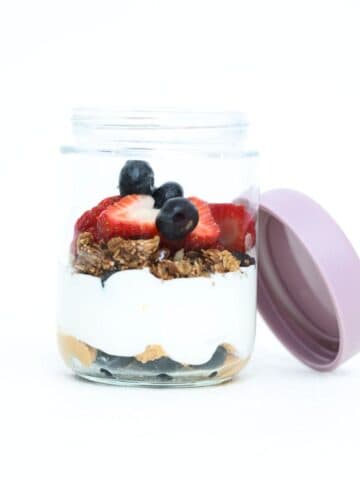
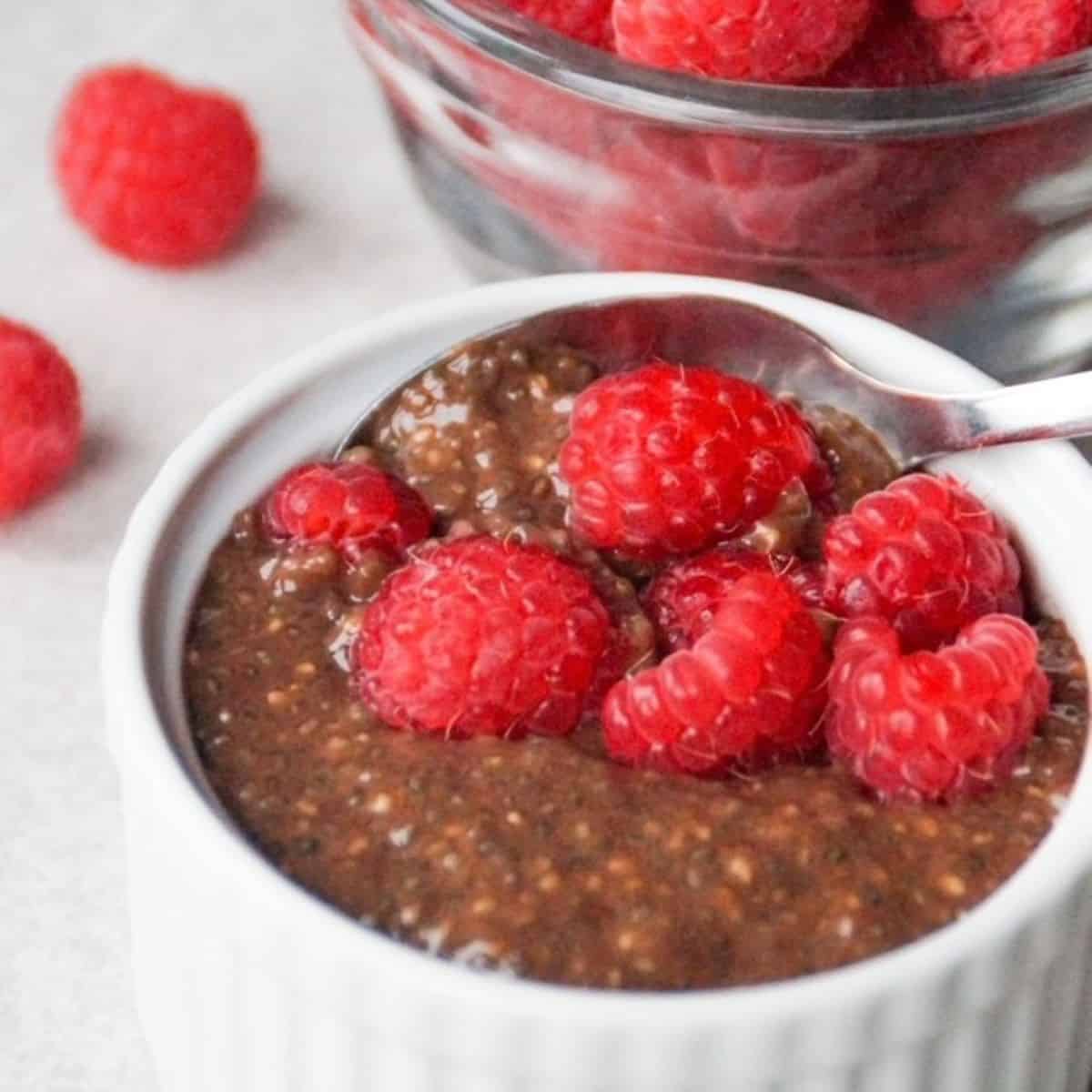
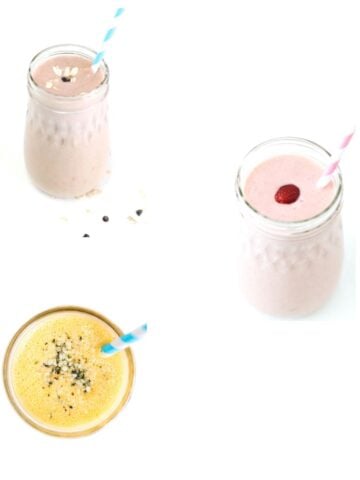


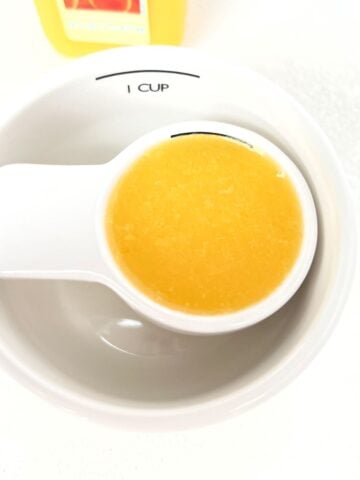
louette coulson says
This whole article is fantastic, there are so many fiber ideas and recipes I had not thought of so thank you so much ❣️
Kristi Ruth RD says
You're so welcome! I'm glad you found this information helpful!